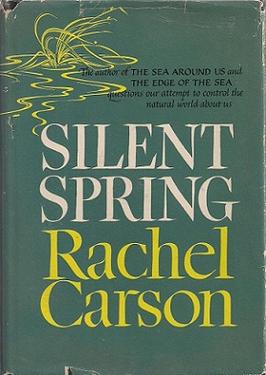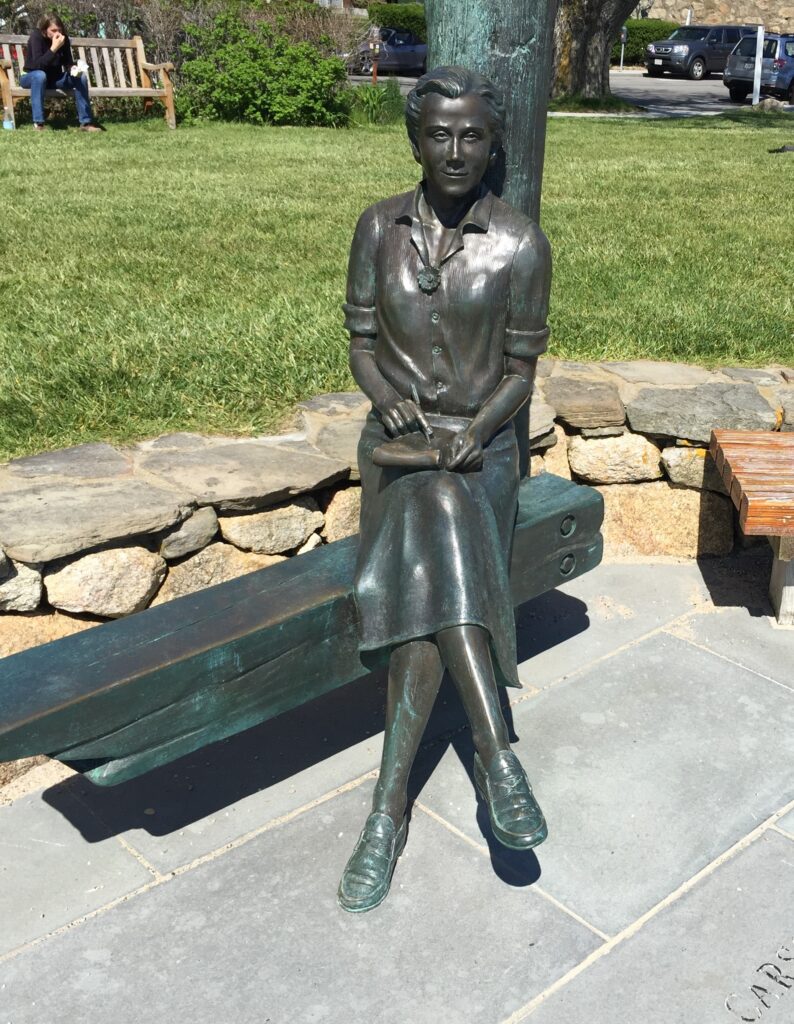Rachel Carson’s Epochal Work Changed the Way Humanity Relates to Our Planet
It was on September 27, 1962 — 62 years ago today — that one of the most groundbreaking and important books ever written was published. That of which I speak is Silent Spring, by Rachel Carson. Its release marked a pivotal moment in not only environmental literature and activism but in the overall history of our species. This work not only catalyzed the modern environmental movement and reshaped public perception about the relationship between humans and the natural world but played a critical role in saving countless other species from extinction.

Attribution Unavailable — Fair use
https://en.wikipedia.org/w/index.php?curid=48694009
Rachel Carson — a marine biologist and writer — meticulously documented the detrimental effects of pesticides, particularly DDT, on ecosystems and human health. Her compelling narrative and scientific rigor ignited a global awareness about environmental issues that resonates to this day.
Background and Context
In the 20th century, the post-World War II era saw an unprecedented rise in chemical use, particularly in agriculture. Pesticides promised to eradicate pests and increase crop yields, feeding an ever-growing population and helping to meet the agricultural demands of a rapidly industrializing society. Unfortunately, however, enthusiasm for the vast potential of chemical products often overshadowed critical considerations about ecological balance and the long-term consequences of chemical exposure. Carson, aware of these dangers, sought to highlight the intricate connections within ecosystems and the potential fallout of human reckless human activity.
Structure and Content
Silent Spring is structured as a compelling narrative interspersed with scientific evidence, which made it accessible to a broad audience. Carson begins with a fable about a town that experiences a mysterious silence, where birds no longer sing and life seems to have vanished. This evocative imagery serves to engage readers emotionally, while also setting the stage for a detailed examination of how human actions — particularly the indiscriminate use of pesticides — disrupt natural processes.
Throughout the book, Carson emphasizes the interconnectedness of life forms, illustrating how pesticides can harm not only targeted pests but also beneficial insects, wildlife and even humans. Her analysis of DDT and its persistence in the environment reveals a cycle of bioaccumulation which demonstrated how toxins can move through the food chain and ultimately affect human health. Carson’s meticulous research and poignant prose underscored the urgency of her message. Readers worldwide found it impossible to ignore the dire implications of unchecked chemical use.
Reactions and Controversy
Upon its publication, Silent Spring faced immediate backlash from chemical companies and some sectors of the scientific community. Critics accused Carson of being alarmist and questioned her credentials as a scientist. However, her work was bolstered by a growing body of scientific research that supported her claims. And so — despite the controversy — the book gained traction and resonated with a public increasingly concerned about our natural environment.

Courtesy of U.S. Fish and Wildlife Service — Public Domain
https://commons.wikimedia.org/w/index.php?curid=277288
Carson’s arguments were further validated by subsequent studies that confirmed the adverse effects of pesticides. The public outcry following the book’s release eventually led to significant policy changes, including a reexamination of pesticide regulations in the United States. In 1972, the Environmental Protection Agency (EPA) banned the use of DDT for agricultural purposes, a testament to the lasting impact of Carson’s work.

Image By LFSM – Own work, CC BY 3.0
https://commons.wikimedia.org/w/index.php?curid=4110663
Legacy and Influence
The legacy of Silent Spring extends far beyond its immediate impact on pesticide regulation. Carson’s work inspired a generation of environmental activists and writers, highlighting the importance of scientific literacy and advocacy in the face of corporate interests. The book is often credited with laying the groundwork for the modern environmental movement, contributing to the establishment of Earth Day in 1970 and the formation of numerous environmental organizations.
What’s more, Carson’s writing style—lyrical yet informative—set a precedent for how environmental issues could be communicated effectively. Her ability to weave scientific facts with personal narrative and poetic language made complex ecological concepts accessible to the general public. This approach continues to influence contemporary environmental literature, encouraging writers to engage readers emotionally while also providing critical information.

Photo By Laura A. Macaluso, Ph.D. – Own work, CC BY-SA 4.0
https://commons.wikimedia.org/w/index.php?curid=51854336
So there you have it. As we mark the 62nd anniversary of Silent Spring, we cannot help but acknowledge Rachel Carson’s profound influence on environmental thought and action. Her work not only challenged the status quo but also inspired a movement that sought to protect the fragile balance of our ecosystems. In an age where environmental issues such as climate change, biodiversity loss and pollution are more pressing than ever, Carson’s message remains relevant. Her call for a more harmonious relationship between humans and nature serves as a reminder of our responsibility to steward the planet for future generations.
By Steven Roberts



